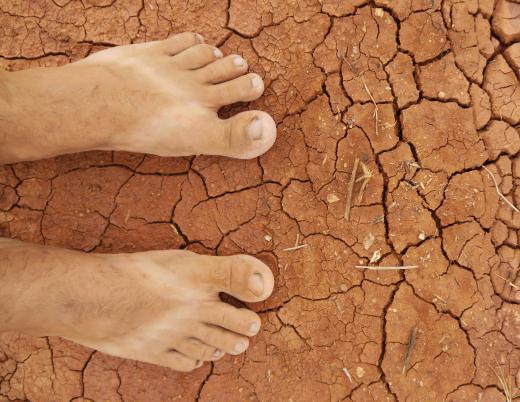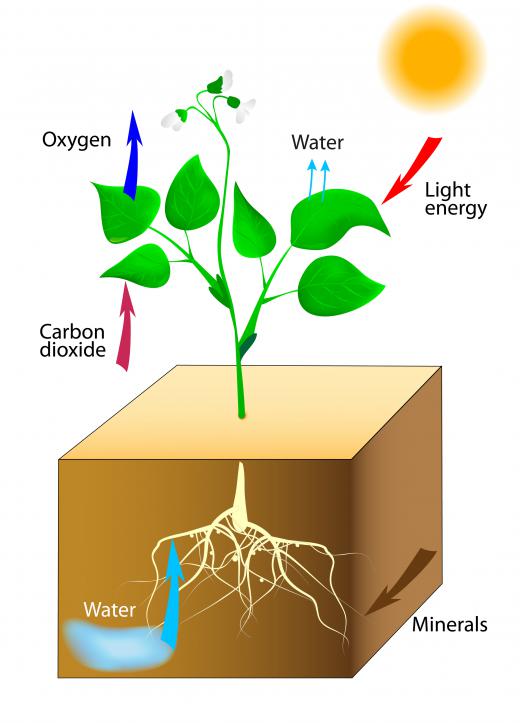What is the Carbon Cycle?
 Michael Anissimov
Michael Anissimov
The carbon cycle is the means by which carbon atoms are exchanged between living things, the ground, the oceans, and the skies; or biosphere, geosphere, hydrosphere, and atmosphere, respectively. There is about 1,000,000 gigatons of carbon on Earth, most of which is locked in sedimentary rocks and never reaches the surface. At the surface, carbon is continuously engaging in a dynamic exchange of consumption and production. This active exchange is referred to as the carbon cycle.
The atmosphere contains approximately 750 gigatons of carbon, mostly in the form of carbon dioxide (CO2). At the consumption end of the carbon cycle, carbon is continuously being drained by 1) the process of photosynthesis, which uses carbon dioxide to create carbohydrates, and 2) the colder parts of the oceans, which are able to absorb carbon dioxide. At the production end of the carbon cycle, atmospheric carbon is continuously being replenished by the following processes: respiration of plants and animals and their decay; the burning of fossil fuels; limestone reactions; the release of carbon dioxide by warm areas of the ocean; and volcanic eruptions. The human burning of fossil fuels has slightly knocked the global carbon cycle or budget out of balance, resulting in an atmosphere with increasing levels of carbon dioxide.

The biosphere contains approximately 600 gigatons of carbon, representing the most condensed carbon pool on Earth. Through the carbon cycle, carbon circulates in and out of the biosphere as plants and animals respirate, excrete, perish, and perform photosynthesis. Soil in the form of organic matter, which plants and animals become when they die, contains about 1,500 gigatons of carbon. Some of this carbon sinks deep into the Earth into sedimentary rocks, never to surface again. Some of it reaches the oceans and dissolves. The deep oceans contain a substantial amount of carbon, about 38,000 gigatons.

About 5.5 gigatons of fossil fuel emissions are released into the atmosphere each year by human industry, creating a figurative top-heavy carbon cycle. International coalitions have been formed to limit these emissions, with moderate success so far. Remaining coal deposits total about 3,000 gigatons of carbon, and remaining oil and gas reserves make up about 300.
AS FEATURED ON:
AS FEATURED ON:














Discussion Comments
Something that's neglected: plants have seriously depleted the CO2 levels over the millennia and are starving. There are sources that outline the process by which trillions of tons of CO2 has been withdrawn from the carbon cycle by plants and laid down as coal, reducing the CO2 from the thousands of parts per million down to mere hundreds.
The scary bit is, if CO2 drops below 200 ppm, 97 percent of all plant life will starve to death..
What do trees have to do with the carbon cycle and oxygen?
Please help.
how much carbon do our home air conditioners release?
I had to write an essay and this helped a ton! thanks much!
it's not just at night it is also in winter. If you have seen al gore's an inconvenient truth, then you can know that when the trees lose their leaves they also emit carbon dioxide since it is through the leaf that the carbon dioxide is taken to the actual tree.
I'm wondering, what is a gigaton/gigatons? Is it a measurement?
WOWWWW!!!!! my dad asked me how many gigatons make up an atom and i said there is no such thing as a gigaton. and then i went to school and was going to ask my science teacher but he's a jerk so i didn't then i looked on google and found out that there was such thing as a gigaton... i thank you and google.com for teaching me this. -Sarah :]
Hi Michele,
I think you're fine. Plants do have different processes at night than during the day, but it would be very difficult for you to have so many plants that the carbon dioxide could actually be dangerous.
You can read a bit more (comments, too!) at
http://www.wisegeek.com/where-does-atmospheric-oxygen-come-from.htm
Good Luck!
I read some place that plants give off carbon dioxide at night so you don't want to keep a lot of them in your bedroom. I have about 12 big plants in my bedroom. Do plants really give off carbon dioxide at night or do they just give off oxygen all the time?
Thanks,
Michele
Post your comments